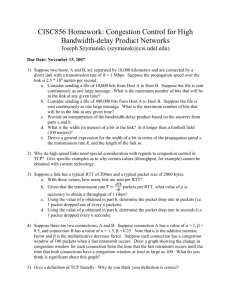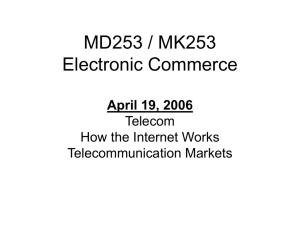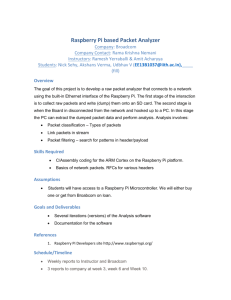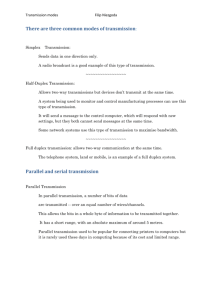View File
advertisement
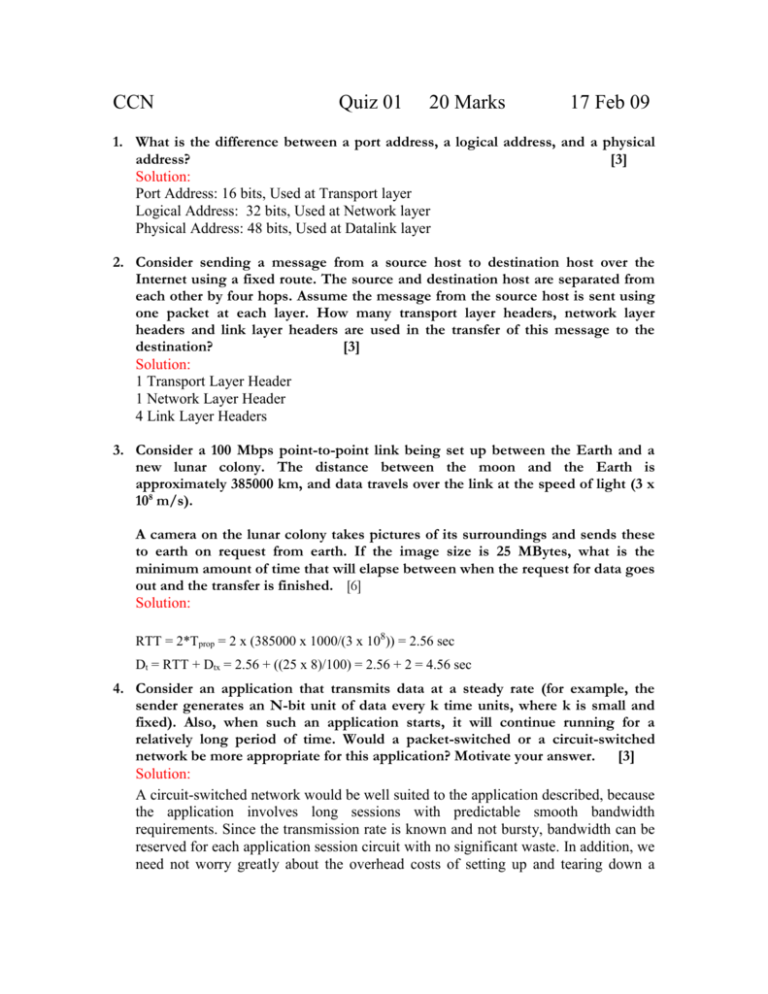
CCN Quiz 01 20 Marks 17 Feb 09 1. What is the difference between a port address, a logical address, and a physical address? [3] Solution: Port Address: 16 bits, Used at Transport layer Logical Address: 32 bits, Used at Network layer Physical Address: 48 bits, Used at Datalink layer 2. Consider sending a message from a source host to destination host over the Internet using a fixed route. The source and destination host are separated from each other by four hops. Assume the message from the source host is sent using one packet at each layer. How many transport layer headers, network layer headers and link layer headers are used in the transfer of this message to the destination? [3] Solution: 1 Transport Layer Header 1 Network Layer Header 4 Link Layer Headers 3. Consider a 100 Mbps point-to-point link being set up between the Earth and a new lunar colony. The distance between the moon and the Earth is approximately 385000 km, and data travels over the link at the speed of light (3 x 108 m/s). A camera on the lunar colony takes pictures of its surroundings and sends these to earth on request from earth. If the image size is 25 MBytes, what is the minimum amount of time that will elapse between when the request for data goes out and the transfer is finished. [6] Solution: RTT = 2*Tprop = 2 x (385000 x 1000/(3 x 108)) = 2.56 sec Dt = RTT + Dtx = 2.56 + ((25 x 8)/100) = 2.56 + 2 = 4.56 sec 4. Consider an application that transmits data at a steady rate (for example, the sender generates an N-bit unit of data every k time units, where k is small and fixed). Also, when such an application starts, it will continue running for a relatively long period of time. Would a packet-switched or a circuit-switched network be more appropriate for this application? Motivate your answer. [3] Solution: A circuit-switched network would be well suited to the application described, because the application involves long sessions with predictable smooth bandwidth requirements. Since the transmission rate is known and not bursty, bandwidth can be reserved for each application session circuit with no significant waste. In addition, we need not worry greatly about the overhead costs of setting up and tearing down a circuit connection, which are amortized over the lengthy duration of a typical application session. 5. Consider a queue at a router with an output link rate (i.e. service rate) of R bits/sec. If N packets arrive at the router every LN/R seconds and each packet is L bits long, find average queuing delay for any arbitrary packet. Give a closed form solution. [5] Solution: It takes LN/R seconds to transmit the N packets. Thus the buffer is empty when a batch of N packets arrives. The first of the N packets has no queuing delay. The second packet has to wait till the first packet is served, i.e. L/R seconds. The third packet has to wait till the first two packets are served. Thus it waits for 2L/R seconds and so on. The nth packet has to wait for the first N-1 packets to be served, i.e. (N-1) L/R seconds. Thus ~~~~~Best of Luck~~~~~



